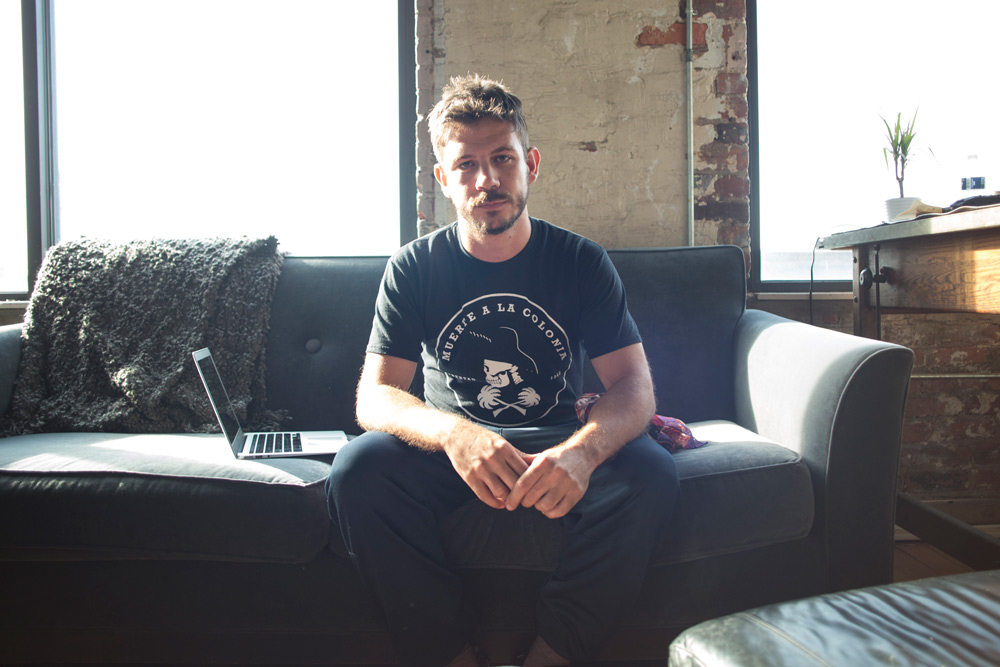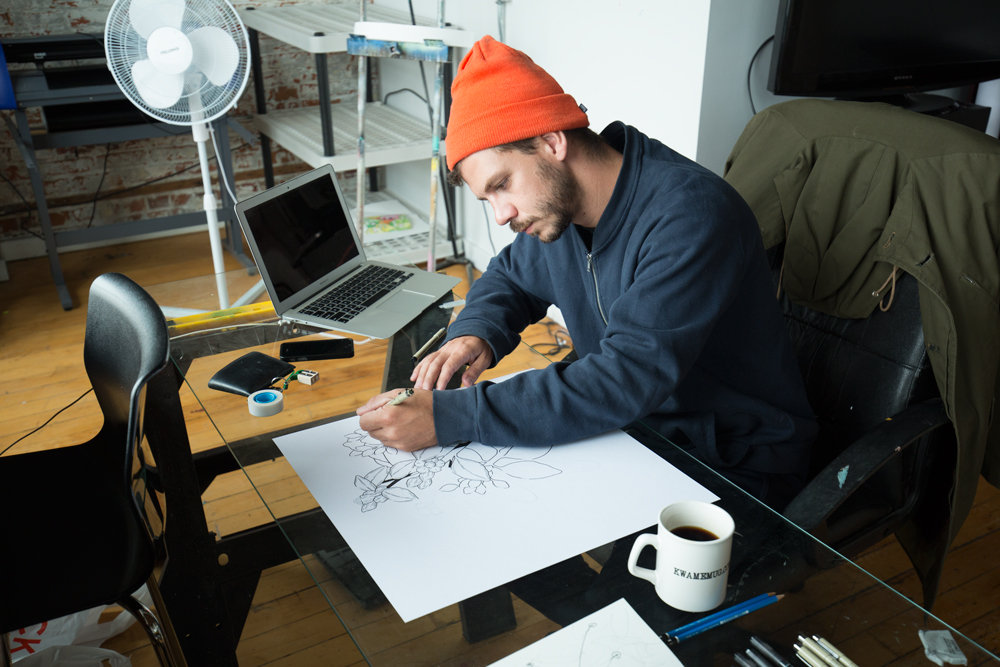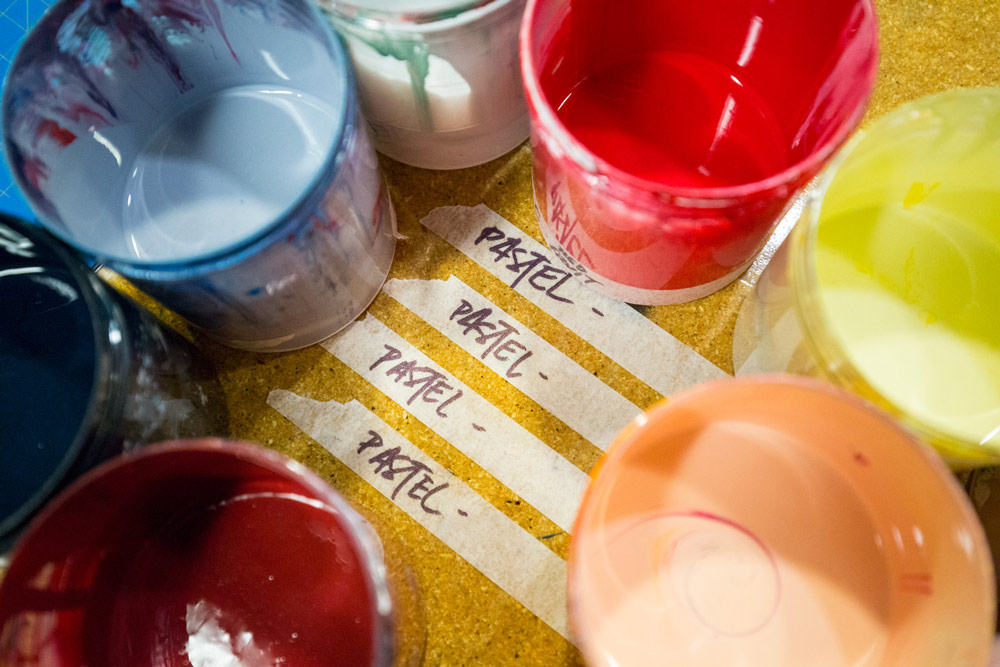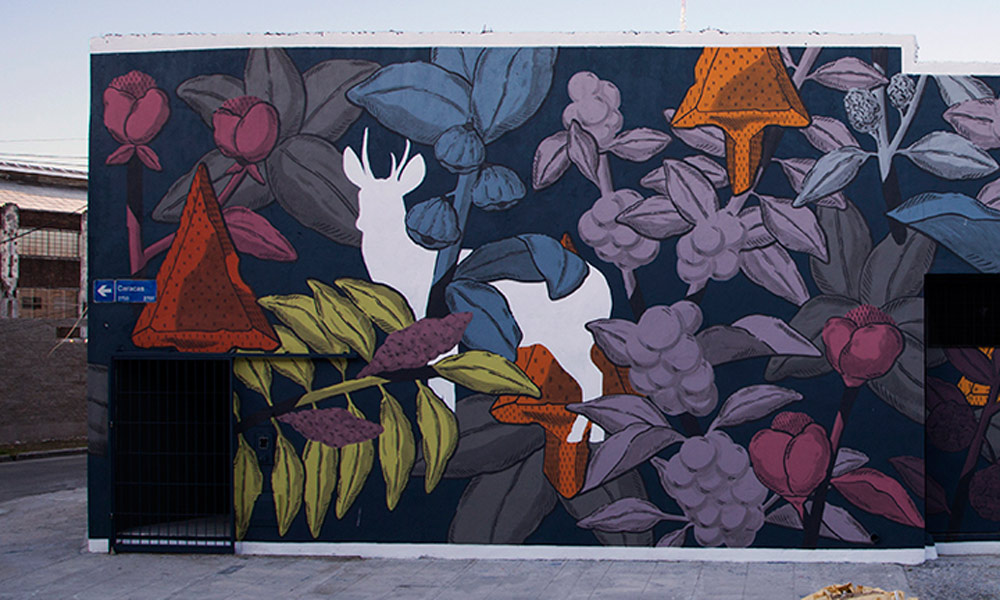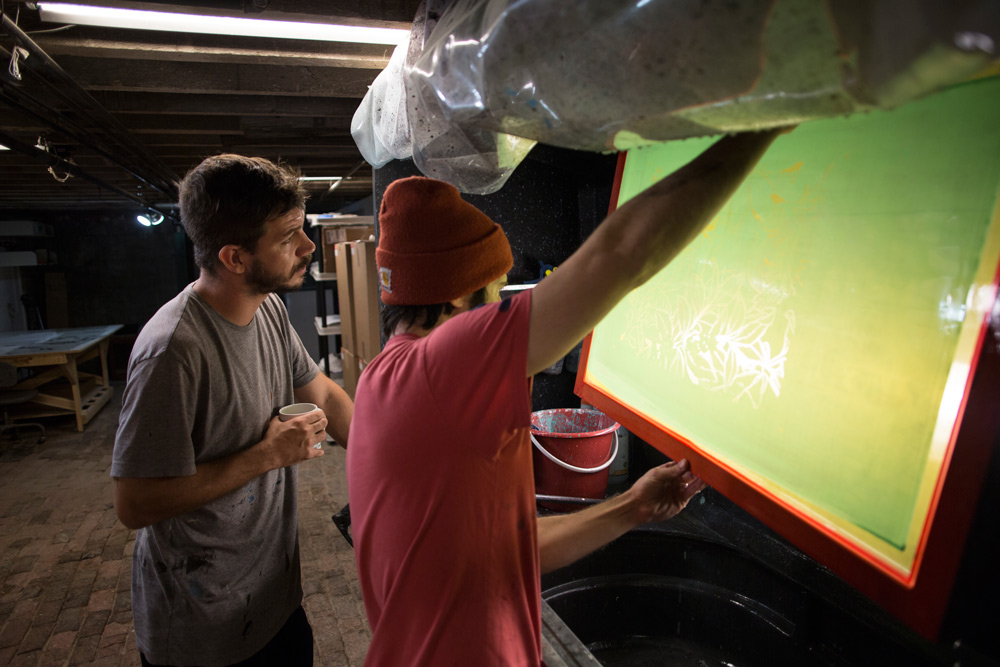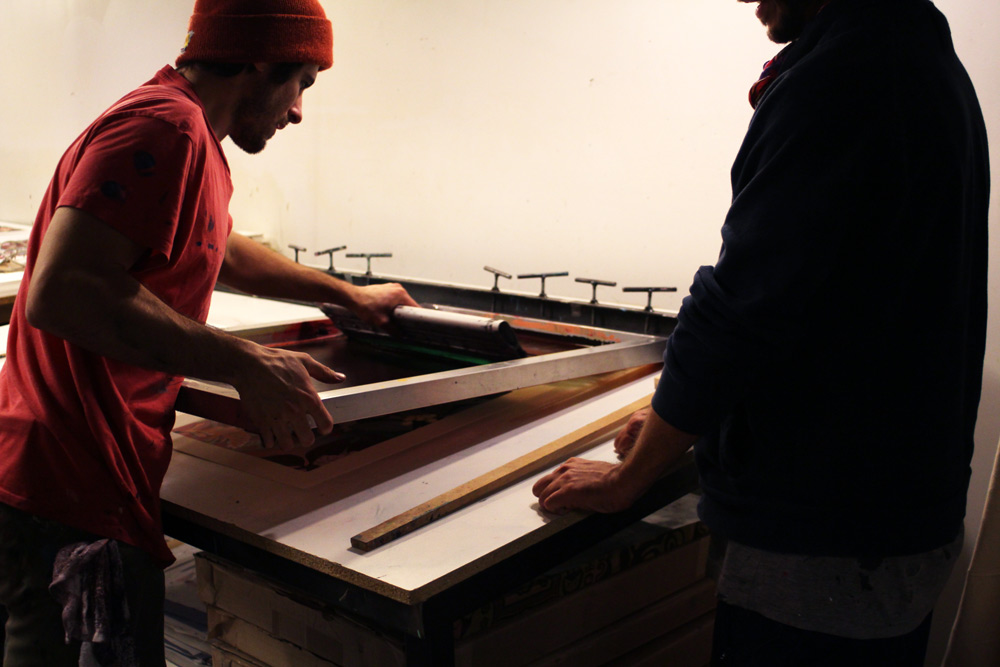Joining us for his very first proper print release we welcome Buenos Aires based artist Pastel. Creating a breathtaking and painstakingly pulled screen print with 1xRUN Master Printer Jonny Alexander, Lethal Gasp focuses on the artist’s most recent Lethal series focusing on poisonous plants. Read on as Pastel gives us some background in how architecture ties to the fine art world and vice versa. Grab one of these 50 hand-pulled editions here while you can and read on to check out the full story and see process photos below…
1xRUN: Anything immediate you would like us to highlight about this piece?
Pastel: This is the first main print that I have done. It was also a great experience because I was part of the entire process. I liked that. I think that people that are working in a given medium need to know the whole process.
1x: Tell us how the idea and execution came about?
Pastel: The process was amazing working with (1xRUN Master Printer) Jonny Alexander. We developed the whole process together. The most important thing about this piece is the design behind the painting. For me the thing about the painting, is there is no design. It’s just the painting. I cannot think about painting or making art like I think about design. It’s something unconscious. To start these pieces though, I will take poisonous plants, and then I assemble them using subconscious mathematics. Putting them in some kind of natural order, this way the plants are composing triangles, squares or these different natural alignments. I’m continuously playing with geometric compositions. It’s more of an internal way to work or design.
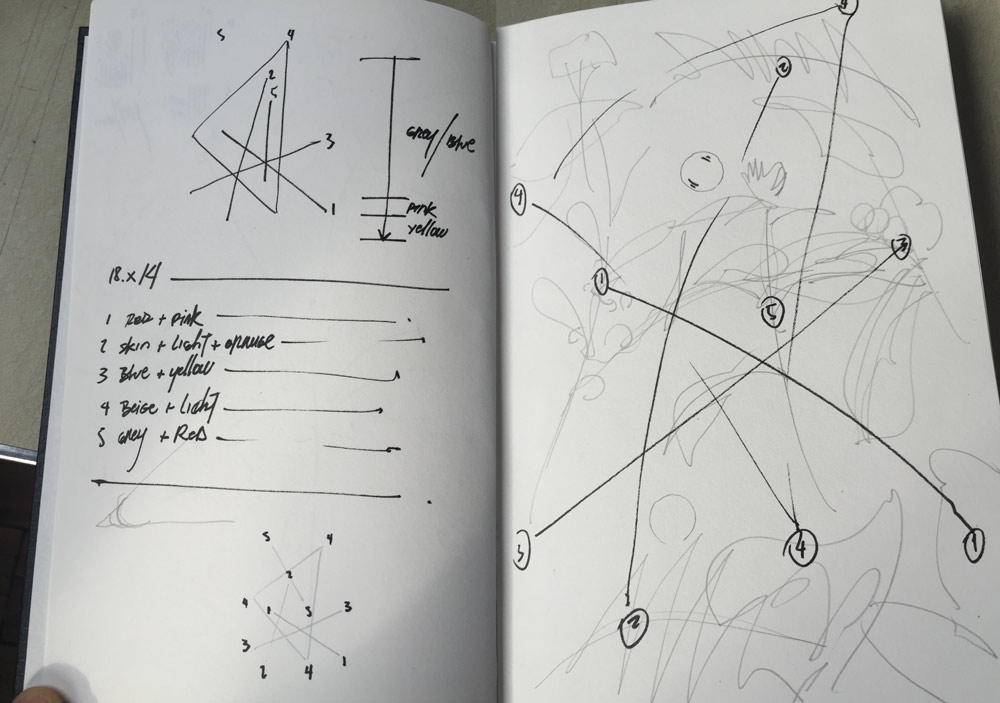
1x: Tell us a little bit about this image itself, what is the story behind it?
Pastel: This print is part of the Lethal series (poisonous plants). It is a symbolic way to talk about the same concept that I will use to work on walls, working with plants to show the social and historical problems that modern society has, how this is changing the way people are living. Not because it’s a natural change for common people, it’s not a modernity pushing, it’s modern society pushing people to change. Painting these plants is like painting a reflection of this problem. I feel plants are the strongest way to talk about it.
1x: Let’s talk about the reference material for this piece, were they chosen for a particular reason?
Pastel: When I make studio stuff, it doesn’t necessarily have to be poisonous plants. When I use specific plants for walls, they are plants that grow in the area. It’s a way to incorporate the local identity, so you can go deeper in the concept about working against gentrification. There is this global thing that is going on with public art. Sometimes it looks like you can do the same stuff here in Detroit or over in Sao Paolo, or Japan. It´s a dangerous thing related to murals and gentrification. I think when people are making work in the public realm they need to think a little bit about it sometimes before they paint.
1x: When was the piece drawn and created? How long did this piece take from start to finish?
Pastel: I would say it was created over the course of 6 days, all day, maybe 10-12 hours per day.
1x: What is unique about this piece compared with some of your other work?
Pastel: I like the concept of semi-industrial processes. A major difference that I had the chance to work with all of the colors that I wanted, that way I could create a very complex piece. Typically I try to work with a more simple color palette, but this time with the way that Jonny works we decided to make things very complex. It was worth taking the risk.
1x: Why should people buy this print?
Pastel: I don’t know. Maybe because it’s made with a lot of love.
1x: Describe the piece in one gut reaction word.
Pastel: Mortal.
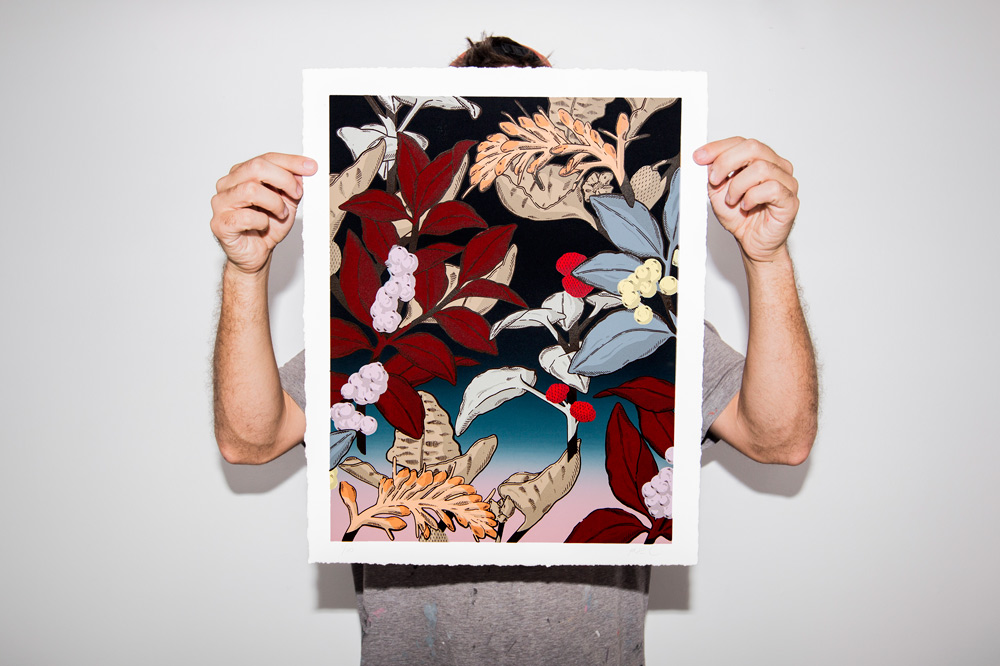
Lethal Gasp by Pastel – Click To Purchase
1x: How was your time spent here in Detroit working with our team here at 1xRUN?
Pastel: It was fucking amazing. I love this city. Everything that I have seen and learned about Detroit, I love it. People here have been super friendly, and there was nothing bad that I can say because everything was perfect. The pace, the way we created the work. I had complete creative control.
1x: When did you first start making art?
Pastel: I got a degree in architecture. At that time I was always doing graffiti. When I was doing architecture I was always trying to understand public spaces in another way. I was thinking how can little actions in public spaces change people’s life? Even if it’s just for a second, how can it change it? If you see a poster with a big pussy, or some graffiti, it’s going to change your day, even if just for a little bit. Maybe if you see a big pussy you’re going to crash. I try to pay more attention to how society works in the public areas. How the dynamics of these public spaces work. How the city turns in something full of non-places, these spaces that are not developed or thought about by the urban master plan, but at the same time how people that live around these non-places make them proper, and how they start to inhabit them. How they create a real and natural identity for these places where nobody would really think twice about it. For example, the ways that people can make a real identification with a bridge, then under the bridge they would create something that a “master urban planner” wouldn’t haven’t thought of. They’ve made it their own. I try to think about those places.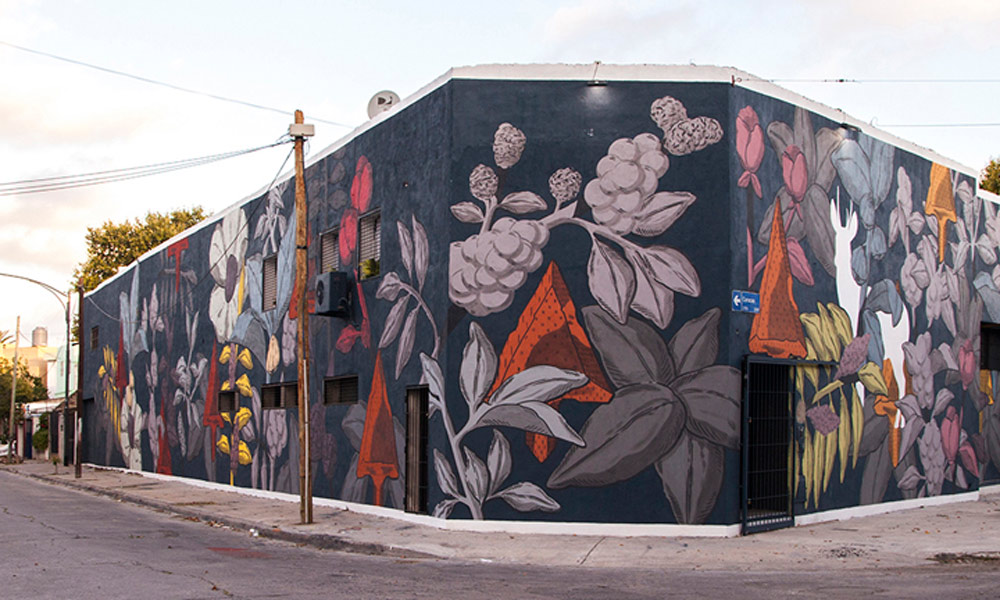
When you are working with public art — it could be murals, sculpture light, whatever — you can improve those places and try to make it better, so we can make it a real place that can be inhabited. I’m always trying to be super careful and responsible when it comes to working in the streets. You cannot be selfish and be working in the streets. There are always other people that are going to be there, so it’s a big challenge to work on the streets. Working in the public space you become both a social actor and a social reactor. So for me, 15 years ago graffiti was something new. There were a lot more freedoms. Now I get much more interested in focusing on what everything about the streets really are. I started looking at it from another point of view.
1x: What was your first piece?
Pastel: I love the architecture world, but in that world everything is about the real estate. Everything is about something becoming a service. You become a service actor rather than an author of your stuff, and I didn’t really agree with that. We are just in this life for a little while, so we need to do our best and do what we want. Just like plants.
1x: Let’s talk about that, do you want to talk a bit more about why plants are such a big influence on you and your work?
Pastel: It’s not because I know so much about plants, all these characteristics, it’s because they are a real social actor. These plants that grow in the city, they grow where human decision has gone wrong. Plants grow between the cracks of the cement. They grow with the most divine power, nobody could expect it. It just grows. That’s fucking crazy. It’s always static, it’s like one of the social actors.
1x: Explain a bit more what you mean by that term social actors…
Pastel: Social actors are the city grid. The people, the buildings, the reflection, the lights, the ground floor entry, each floor, the smog, it’s everything. I think in this large catalog of social actors plants are the temporary innocent and tragic actor, they can disappear, and nobody will take care of it. Everything has a linear process of maturing, but each actor and reactor has a different lifetime. It’s good to know how they all mix and live together.
1x: How easy was it for you to bridge that gap between architecture and artwork?
Pastel: I think the things that I’m doing on the street allow me to make a little thing, and then people will react and change a place. In some way there is always this same attitude, whether it is with murals or studio works, so I try to introduce things as if it was an architectural project, urban acupuncture. Making references and shaping the spaces between the new stuff and the existing areas. The same geometrical design and the results of the city or landscape is easily applied to a painting.
1x: What artists inspired you early on?
Pastel: In some ways the decision to start to paint was something unconscious. I’ve always been in touch with design and materials, sensitive shit. I don’t know though, in these times when you try to think about who your influences are it’s always complicated. Our God internet gives us everything.
1x: Do you listen to music while you work? If so what? If not then what is your environment like when you work?
Pastel: Depends on the moment. I can go from classic to cumbia.
1x: How does the rest of your year look?
Pastel: I have lots of things to do. First I’m supposed to go the Philippines, but it’s looking like that project will be postponed because the Pope is going to the Philippines, so the Pope will be going and not me. I try to not keep doing the same thing, I always want to be working on a mix of different projects.
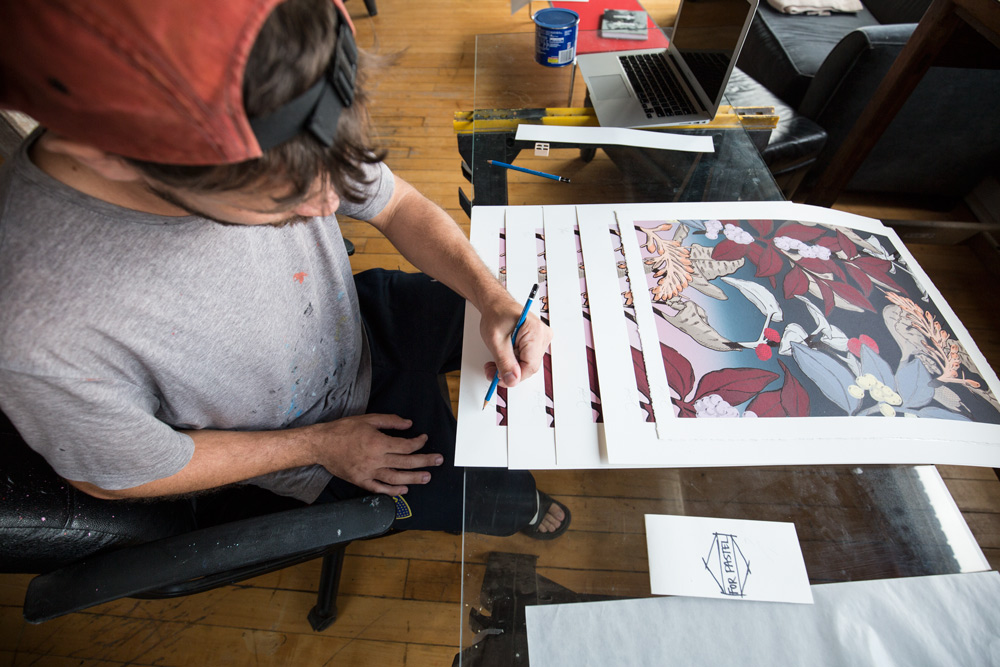
1x: Where else can people find you?
Pastel: Website – Instagram @PastelFD
-1xRUN
